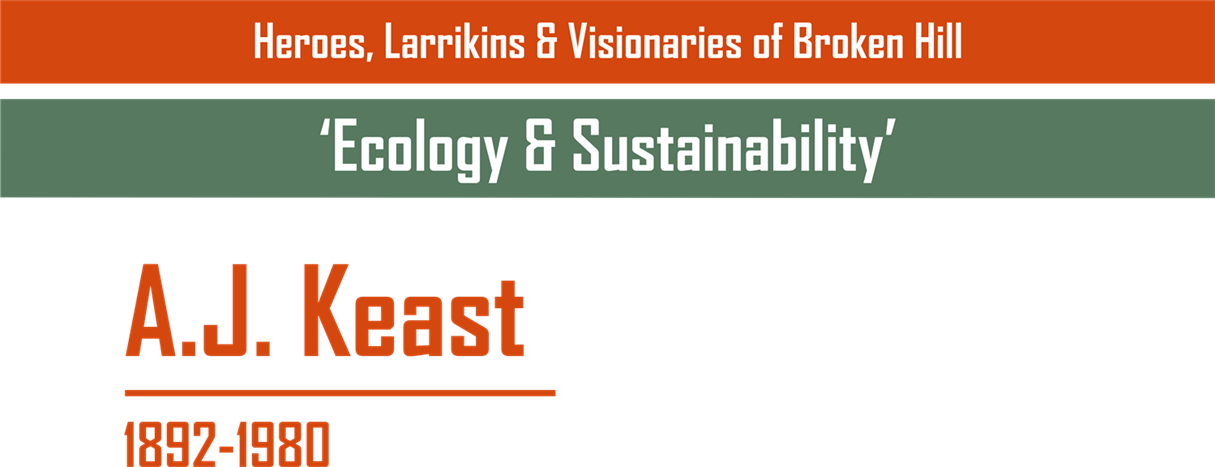A.J. Keast

War hero turned mining engineer, Asdruebal James Keast was fifteen when he came to live in Broken Hill. Only a few years later he fought at Gallipoli and on the Western Front. He was awarded the Military Medal ‘for acts of gallantry and devotion under fire’, before being commissioned by the Royal Engineers and sent to Mesopotamia to work on water supply. By the end of the war the young A.J. Keast had established a reputation for being a brilliant strategist and overseer.
By the time he arrived in Broken Hill in 1907 with his Cornish father and South Australian mother, Keast had lived in South Australia, Western Australia and Queensland. To make up for the disruption to his education he took night classes in Broken Hill Technical College whilst he worked as an assayer for the Zinc Corporation, the company for whom he would one day become General Manager.
The Zinc Corporation was originally established to extract zinc from the waste product, or tailings, of mining activities in Broken Hill. By the time the company was founded in 1905, twenty years of mining had accumulated six million tonnes of waste. By 1936 the Corporation had expanded into mining their own silver and lead as well as zinc, and needed someone like A.J. Keast as General Manager to rethink operations and oversee the planning and construction of a warren of new underground mines. A.J. Keast had, by this time, studied at the Michigan School of Mines and spent 12 years working in the U.S. and Canada as a mining engineer. He was already a legend in mining circles for his imagination and determination.
A.J. Keast’s major surface construction and underground development at the Zinc Mine took place between 1936 and 1939. This required sinking mine shafts into desert soil that had been destabilised by decades of deforestation causing major environmental changes. The most dramatic of these were dust storms that blew into Broken Hill from the surrounding desert, settling in banks of sand that devastated homes and buried everything in sight under a storm of brown dirt. By the time he left Broken Hill for Melbourne in 1946 A.J. was as well known as an environmentalist as for mining innovations. Without his energetic support, the now-famous regeneration project of desert flora lovingly developed by botanists Albert and Margaret Morris could not have proceeded.
A.J. Keast was a leader for Broken Hill Associated Smelters, Australian Oil Exploration Co. Ltd., Mary Kathleen uranium deposit in northern Queensland and the Australian Aluminium Production Commission. His capacity for hard work and innovation was acknowledged by honorary doctorates in Engineering and Science from universities in the U.S. and Canada. He was awarded medals for excellence by both the University of Melbourne and the Australasian Institute of Mining and Metallurgy. When he died in 1980, the mining and engineering worlds lost a true visionary.
Railwaytown Park was renamed the A J Keast Park in his honour.
Audio transcript available.